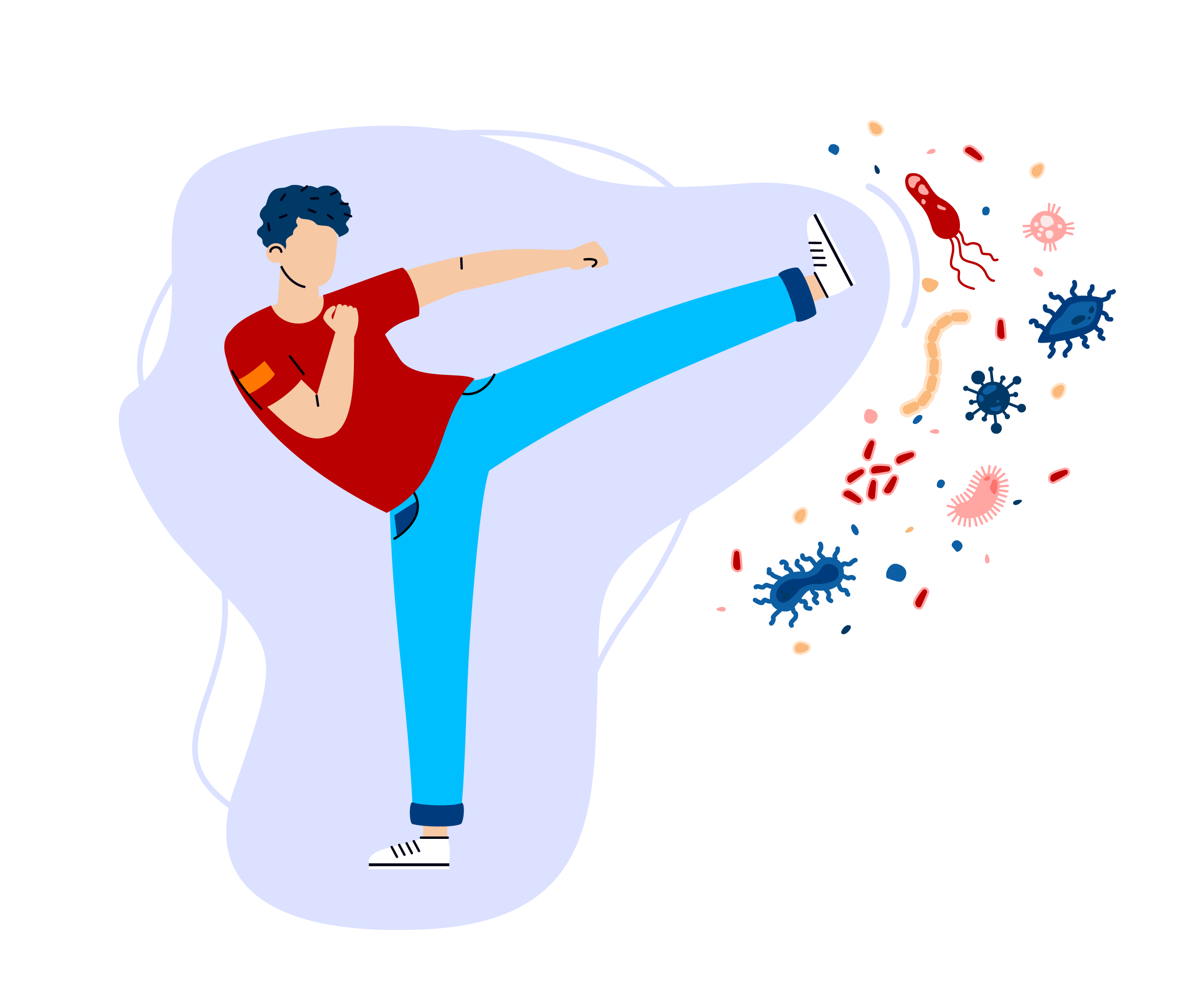
The most common genetic diseases are often a result of genetic mutations due to germline mutations (inherited), somatic mutations (acquired), or extra/missing chromosomes. Germline mutations happen at the time of conception, stemming from changes in DNA material within the sperm and egg. Hence, these common inherited diseases are passed on from generation to generation. These types of genetic diseases are the only ones that could be inherited.
Because these common genetic diseases are caused by genetic mutations, “inherited” and “genetic” terms are often used interchangeably. However, bear in mind that not all genetic diseases are hereditary. For instance, somatic mutations are errors in DNA replication during cell division, occurring after an egg and sperm meet and fertilize to form an embryo. Reasons for this may be random or environmental factors like exposure to a virus, chemicals, ultraviolet radiation and mutagens in food. Therefore, these somatic mutations cannot be passed on or inherited by future children. Common examples of these somatic mutations are lung and skin cancer.
Similarly, common genetic diseases because of extra chromosomes such as Down’s Syndrome, also referred to as Trisomy 21, are usually not inherited genetic conditions because they occur during the fetal development phase post-conception. Only Translocation Down’s Syndrome could be passed from parent to child, but this is very uncommon and happens to about 3% of children with Down’s Syndrome.
The Most Common Genetic Diseases That Are Inheritable
Germline mutations are hereditary or those that could be passed onto an offspring. Germline mutations occur in reproductive cells, meaning the sperm cell, egg cell, or both. These changes in the reproductive cells are passed directly from parent to child upon conception. As the embryo grows into a fetus, the mutation from the reproductive cells is incorporated or copied into the DNA of every cell within the baby’s body.
And here is where it could get tricky – the biological mother or father doesn’t necessarily have to be diagnosed with a genetic disorder to pass it to their offspring. One carrier parent of a mutated gene could potentially pass the same faulty gene to their kids. And if their partner is also a carrier of a mutated gene or diagnosed with the disease, their offspring will have higher chances of manifesting the illness.
A carrier parent could therefore have a child that is also a carrier of a disease-causing gene mutation (with no symptoms) and pass it on to future offspring, or the child could manifest the genetic disease and all its debilitating symptoms if the partner is a carrier. The chances of the child getting diagnosed with the disease depends if the father, mother, or both parents are carriers. The inherited disease is often described as something that “runs in the family.”
Below are some of the most common inherited diseases:

1. Cystic Fibrosis
This genetic condition is caused by gene mutations that alter the cells producing mucus, digestive juices, and sweat. Those suffering from this disease produce thick and sticky mucus that causes severe damage to the respiratory, digestive, and reproductive systems. There is no cure for cystic fibrosis. It usually compromises the quality of life and a sick person may have issues with fertility.
The inheritance rate is at 25% if both parents are carriers of the genetic mutation that causes cystic fibrosis. A child who inherits two copies of the defective CFTR gene from each parent will have cystic fibrosis. However, if an offspring only acquires one copy of the defective gene from either mom or dad, they will not have symptoms but they could pass the defective genes to their future kids. Studies show that this disease is very common in Caucasians of Northern European Ancestry. However, it can also occur in other ethnic groups as well.
2. Tay-Sachs Disease
Another illness belonging to the list of common genetic diseases is Tay-Sachs disease. It is passed on from parents to offspring if both parents have a mutation in their HEXA gene. The child can only have this disease if both parents are carriers. This is a fatal disease that slowly destroys the nervous system. The most common form of Tay-Sachs disease, known as infantile Tay-Sachs disease, becomes apparent early in life. This vicious progression usually results in death when the child reaches five years of age.
Notably, a one-carrier parent will not result in a child with Tay-Sachs. However, the parent has about a 50% chance of passing the mutated gene to their children. The incidence of this genetic disease is higher in Ashkenazi Jewish descent. In the United States, 1 in every 27 Jews is a carrier of Tay-Sachs Disease gene.
3. Sickle Cell Disease
Another one of the most common genetic diseases is Sickle Cell Disease, which is sometimes referred to as Sickle Cell Anemia. This inheritable blood disease is caused by abnormalities or mutations in the genes responsible for encoding the hemoglobin protein.
This disease may manifest in a child when both parents are carriers of the same mutated HBB gene that causes Sickle Cell Disease. There is a 25% chance that a child would be born with Sickle Cell Disease if their mother and father are both carriers of the genetic mutation.
However, if the child inherits only one copy of the mutated gene from either the mother or father, the baby will be normal and won’t show any symptoms. However, there is a 50% chance that the child will be a carrier and pass on the defective genes to future children.
With Sickle Cell Disease, the normal donut-shaped red blood cells become abnormal and morph into the crescent-like shape of a sickle. As a result, the red blood cells with abnormal hemoglobin protein clump together. They end up being stuck in narrow blood vessels, leading to extreme pain and complications like chronic anemia, infection, acute respiratory syndrome, and multi-organ damage to the heart, lungs, and kidneys.
In the United States, the CDC (Center for Disease Control) says that Sickle Cell Disease affects 100,000 Americans in a year, mostly those with African American heritage. For example, 1 in every 365 African or African American babies are diagnosed with Sickle Cell Disease, while 1 in every 16,300 Hispanic-American babies are born with it. The genetic mutation is also common in people of Indian, sub-Saharan African, Saudi Arabian or Mediterranean descent. Fortunately, modern medicine has limited the mortality rate of this disease, although it still is a serious disease to live with.
5. Thalassemia
Another common inheritable disease is Thalassemia. This is a hereditary genetic issue that limits an individual’s natural production of hemoglobin. Because hemoglobin contains oxygenated blood, this condition inhibits the flow of oxygen in a person’s body. People who are diagnosed with Thalassemia suffer from severe anemia. They need specialized care such as chelation therapy or frequent blood transfusions.
Does Thalassemia run in your family? You have a 25% chance of getting Thalassemia if both your parents are genetic carriers of the defective genes. However, if only one parent is the carrier, you will not develop Thalassemia but you could also be a carrier of the defective gene. Although you will not have Thalassemia later in life, as a carrier you may have only mild anemia and could potentially pass the illness to your kids.
6. Hemophilia
This illness is a blood clotting disorder that belongs to common genetic diseases that mostly impact males. Since someone who has hemophilia has clotting problems, it can lead to excessive bleeding or hemorrhage, which is fatal. Hemophilia is an inherited illness because the mutated gene is found in the X chromosome. This chromosome is the one responsible for determining an individual’s gender.
Remember, males have X and Y chromosomes. Females have two X chromosomes. An infant boy’s Y chromosome comes from the father and the X chromosome comes from one of the mom’s pairs. Hence, if the mother has a mutated gene in the X chromosome, the child has a higher chance of inheriting hemophilia.
Notably, women who are carriers of hemophilia don’t show any signs of the disease because it is masked by their other X chromosomes. However, they could give birth to a male child who is affected with hemophilia or a daughter who is a carrier. Moreover, if the father has hemophilia with a wife who is not a carrier, he has a 50% chance of passing carrier genes to a daughter and the son wouldn’t be affected with hemophilia because the disease comes from the mother’s X chromosome.
Getting Carrier Screening to Test for Genetic Mutations
If you’re planning to start a family and feel apprehensive that your children could possibly acquire one of the above common genetic diseases, doing carrier screening will help. In fact, a DNA test from CircleDNA can help determine whether you or your partner carry genetic mutations that you may potentially pass to your children. This at-home DNA has a 99.9% analytical accuracy based on the most advanced exome sequencing, so you can use the genetic carrier information when planning for a family.
If you find out you and your partner are carriers, especially if you’re both carriers of the same gene mutations that cause serious illness, there are options available. You can consider eliminating the risk with assisted reproductive technology such as IVF, in which you can screen the embryos for mutations with preimplantation genetic testing also known as PGT.
Family planning requires genetic testing sometimes, especially if one of these more serious genetic mutations runs in your family.
References:
- Genetics, Somatic Mutation (Brielle Miles and Prasanna Tadi) https://pubmed.ncbi.nlm.nih.gov/32491819/
- Down Syndrome (Mayo Clinic) https://www.mayoclinic.org/diseases-conditions/down-syndrome/symptoms-causes/syc-20355977
- Data and Statistics on Sickle Cell Disease (CDC) https://www.cdc.gov/ncbddd/sicklecell/data.html
- The Incidence of Cystic Fibrosis in the Central Region of Anatolia in Turkey Between 2015 and 2016 (Melih Hangul et.al.) https://www.ncbi.nlm.nih.gov/pmc/articles/PMC6528529/
- Tay-Sachs Disease (Mayo Clinic) https://www.mayoclinic.org/diseases-conditions/tay-sachs-disease/symptoms-causes/syc-20378190






